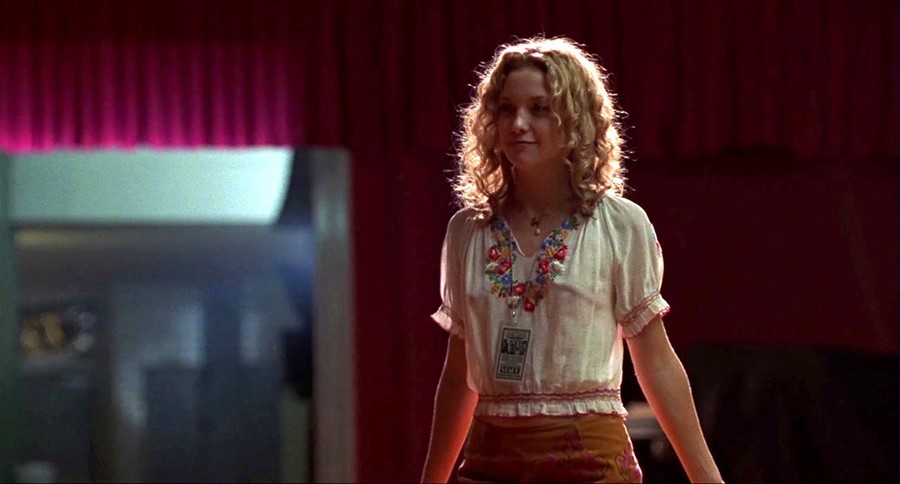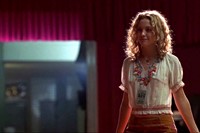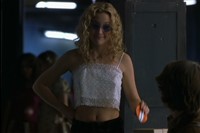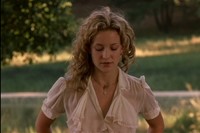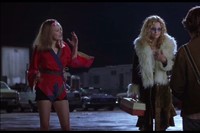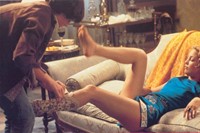We celebrate the sartorial prowess of cinema’s most iconic groupie (sorry, Band Aid) and owner of the world’s most coveted coat
It was 16 years ago that Almost Famous, Cameron Crowe’s beloved ode to rock’n’roll, arrived on the big screen, delighting audiences with its warm, funny and thoughtful observations of the American music scene in the 1970s. It is told from the point of view of 15-year-old William Miller, an aspiring rock journalist who puts on a deep voice and secures a feature for Rolling Stone Magazine over the phone (just as Crowe himself did as a teen). To the dismay of his rock-music-fearing mother, William heads off on tour with up-and-coming band Stillwater, spearheaded by the arrogant Jeff Bebe (Jason Lee) and the more handsome and talented, but no less self-involved, guitarist Russell Hammond (Billy Crudup), to document his experiences.
Also aboard the Stillwater tour bus, rather brilliantly dubbed Dolores, are the band’s devoted muses the Band Aids – don’t you dare call them groupies – led by the beguiling Penny Lane, played to perfection by a young Kate Hudson. Band fallouts, lovers’ spats, acid-induced stunts and a death-defying plane ride ensue, with a wide-eyed William watching from the wings, trying desperately to follow the advice of veteran music writer Lester Bangs (the late, great Philip Seymour Hoffman) who warns him not to make friends with the band – “friendship is the booze they feed you”.
Throughout the film, Cameron uses music as much more than a backdrop, intricately weaving it into the fabric of the story – like when William’s sister Anita (Zooey Deschanel) plays their mother Simon and Garfunkel's America to explain why she’s leaving home to become an air stewardess, or when Penny Lane slides daintily across the floor of an empty concert hall strewn with crepe paper to the sorrowful sounds of Cat Stevens’ The Wind (key line: “where I end up well I think only God really knows”). Equally, costume designer Betsy Heimann – also the woman behind the iconic costumes of Reservoir Dogs and Pulp Fiction – dreamed up every single ensemble herself, with the exception of the characters’ Levi’s, imbuing them with specific meanings that reflect the characters and their states of mind. The most standout costumes of course belong to Penny Lane (surely no one has ever finished watching the film without a desperate longing to possess that sheepskin coat), which have developed a fan following all of their own. Here, we dissect Lane’s style traits and consider their enduring appeal.
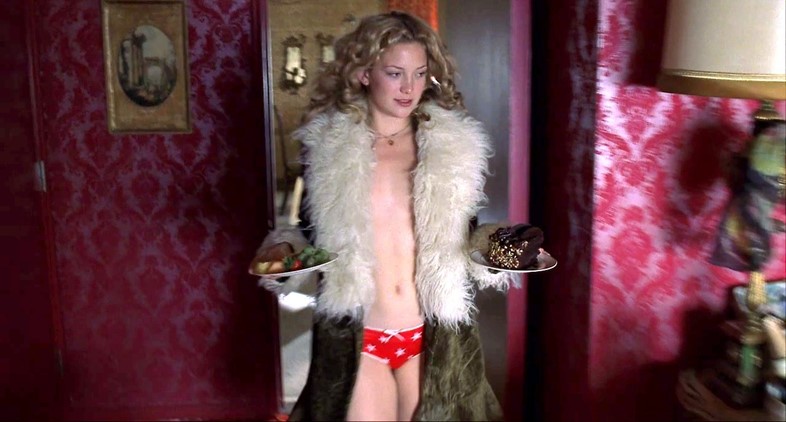
The Signature Style
Lane’s day-to-day style is the definition of Woodstock chic: flared Levi’s 501s, tan suede mini skirts, a plethora of different, delicately embellished crop tops, chiffon blouses and platform wedges. Her jewellery consists of simple gold stud earrings, a gold necklace with a heart pendant and a giant gemstone ring, she wears her hair down in loose, flowing curls, and she is rarely without her round, purple-tinted sunglasses with silver rims. The aforementioned coat – olive suede with an embroidered back, and a white fur collar and cuffs – is her most iconic piece, and was intended by Heimann to act as her armour. “We knew that Penny Lane had a coat,” the costume designer told Dazed’s Emma Hope Allwood in a recent interview. “There was no picture reference for that at all, I just felt like she was so vulnerable on the inside and so strong on the outside, that this coat was her armour. She could wrap herself up in it and no matter how low or insecure she was feeling, she put on that coat and she became Penny Lane. It was her protection.” Heimann based the coat on 1920s opera coats (which were longer at the back than at the front), Shirley MacLaine’s character in The Apartment and of course the character of Lane herself. “I immediately felt it had to have a little bit of fur,” she recalled. “I actually made that coat out of a rug with the collar and some upholstery fabric that I found.”
Lane’s other outfits are similarly telling of her psychological state. When William tells her that her cherished Russell has sold her to another band for $50 and a crate of beer, for example, and Lane so memorably wipes away a tear, asking with a grin, “what kind of beer”, she is wearing a transparent, ruffled blouse. “This was a very fragile blouse,” Heimann told Entertainment Weekly. “I think it took us, like, three days to make it. You could see through it. She actually didn’t have a bra on under that and I loved it for that moment. You could see through it, and there she was; she was trying to make lemonade out of lemons.”
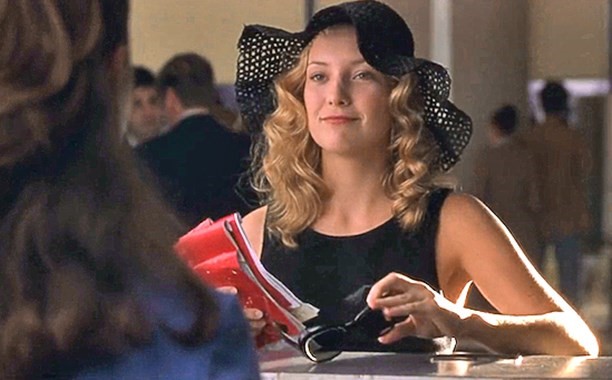
Only twice does Lane trade in her hippie garms for something markedly different: once when she shows up to the restaurant where Russell is sitting with his wife (the precursor to her Quaalude overdose), and again at the end as she buys her long-dreamt-of ticket to Morocco. In the first instance she wears a bright turquoise mini-dress, with a decorated trim and her hair up, for once, in a chignon. This she accompanies with knee-high, lace-up boots in beige suede and covered in tiny jewels. This is Lane attempting to play grown-up and show Russell what he’s missing out on but she’s broken her own rule – “never take it seriously” – and inevitably ends up getting hurt. Her final outfit – an elegant black dress, black straw hat and black-rimmed sunglasses – represents Lane’s embarking upon a new chapter, leaving her past behind. “She’s playing another part,” Heimann explained of the look. “She’s playing Audrey Hepburn. She’s grown up a lot through the course of the film, and realised that her life is worth something. It’s not defined by what others think of her… Now she’s going to be an exotic American woman visiting a foreign land, just like in an Audrey Hepburn movie. It’s just another way of her expressing herself with an outer persona.”

The Modern Manifestation
The 1970s have been enjoying a distinct revival on the runway over the past couple of years, with everyone from Alessandro Michele to Diane von Furstenberg and Hedi Slimane extolling the virtues of a flared, high-waisted trouser, lots of leather and suede, embroidered, loose flowing blouses, knee-high boots and so forth; while Instagram feeds around the world continue to celebrate the style heyday of 70s sirens Bianca Jagger, Mia Farrow, Bebe Buell (the singer, model and musicians’ muse upon whom Lane’s character was loosely based) et al. Thus Penny Lane’s Band Aid attire remains very much de rigueur, and happily easy to channel, over 40 years after the film was set (NB: you will still have to sew your own coat, however). But more than that, it is Lane’s attitude and determined romance, combined with her style, that has sealed her fate as one of cinema’s best loved characters: she invests herself 100% in her passions and is determined to live life in a world of her own making, using her clothes as a vital tool to do so.
